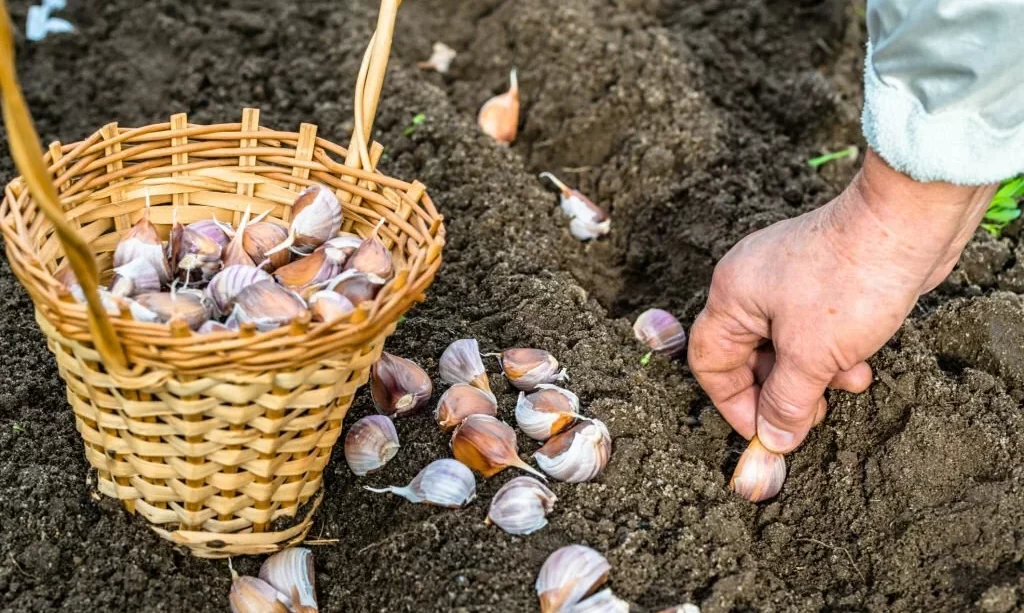Garlic, with its pungent aroma and robust flavor, is a kitchen staple that’s prized by chefs and home cooks alike. But did you know that the secret to enjoying the freshest and most flavorful garlic lies in the timing of its planting? In this guide, we’ll dive into the world of garlic cultivation in the state of Georgia, where the right timing can make all the difference in the quality of your harvest. Whether you’re a gardening enthusiast or just getting started, understanding when to plant garlic in Georgia is essential for a successful and flavorful garlic crop.
Georgia’s Climate
Georgia’s climate is as diverse as the landscapes that stretch from the mountains in the north to the coastal plains in the south. The state experiences a range of weather patterns, and understanding these variations is key to knowing when to plant garlic.
In Georgia, you’ll find a mix of temperate and subtropical climates. In the northern parts, like the Blue Ridge Mountains, the weather can be cooler, especially during the winter months. In contrast, the coastal regions enjoy milder winters and warmer summers. This diversity means that the timing for planting garlic can vary across the state.
Knowing your specific climate zone within Georgia is crucial when planning your garlic planting. The northern regions typically have a shorter growing season, while the southern regions offer a more extended period for cultivation. By understanding Georgia’s climate, you can make informed decisions about the best time to plant garlic and increase your chances of a successful harvest.
Garlic Varieties for Georgia
Selecting the right garlic variety is a vital step for a thriving garlic crop in Georgia. Fortunately, several garlic types are well-suited to the state’s diverse climates. For those in the northern regions, where winters are cooler, hardneck garlic varieties like “Chesnok Red” and “Music” tend to perform well. They thrive in the colder temperatures and produce larger cloves. In the milder southern parts of Georgia, softneck garlic varieties like “Inchelium Red” and “California Early” are excellent choices. These varieties adapt to the longer growing season and often store well.
When choosing your garlic variety, consider your local climate, your preference for flavor (garlic can vary from mild to bold), and whether you want to grow your own seed stock. The right variety can make a substantial difference in your garlic-growing experience.
Fall Planting
Fall is the ideal season for planting garlic in Georgia. Typically, this means getting your cloves in the ground between late September and early November. The reason behind this timing is that garlic needs a period of cold weather to develop bulbs properly. Georgia’s diverse climate zones play a role in the exact planting time.
To begin, prepare your garden bed by loosening the soil and adding organic matter to improve drainage and fertility. Separate your garlic bulbs into individual cloves, leaving the papery skin on each clove. Plant the cloves about two inches deep and 4-6 inches apart in rows, with at least a foot between rows. Cover them with soil and give them a good watering to settle the soil.
As the days grow shorter and temperatures cool, your garlic will establish strong roots. In the spring, green shoots will emerge, signaling the onset of the growing season. With proper care and maintenance, you can expect to harvest your garlic the following summer. Fall planting allows the garlic to experience the cold needed for bulb formation and the warmth of spring for leafy growth, resulting in robust, flavorful bulbs.
Caring for Your Garlic Crop
Once you’ve planted your garlic in Georgia, it’s essential to care for your crop to ensure a bountiful harvest. Here are some crucial care tips:
- Watering: Keep the soil consistently moist but not waterlogged. During the growing season, garlic needs about an inch of water per week. In the spring, reduce watering as the bulbs mature to avoid rot.
- Fertilizing: Garlic benefits from a balanced fertilizer. Apply a nitrogen-rich fertilizer in the early spring and then stop fertilizing as the bulbs develop to prevent excess green growth.
- Weed Control: Regularly weed your garlic bed to prevent competition for nutrients and space. A layer of mulch can help in weed control.
- Pest and Disease Management: Keep an eye out for pests like aphids and garlic rust. You can manage these issues with organic solutions, such as neem oil, and by promptly removing any affected leaves.
By providing the right care, you’ll help your garlic crop thrive in Georgia’s diverse climate zones.
- 🌿 Balanced 10-10-10 Granular Fertilizer for Outdoor & Indoor Plants: All-purpose plant food with 10% Nitrogen, 10% Phosphorus, and 10% Potassium. Perfect for outdoor vegetable gardens, fruit trees, evergreens, shrubs, lawns, and flowers. Also great for potted plants and indoor gardening. One solution for all your plant needs!
- ⏳ Slow-Release Formula for Continuous Outdoor Feeding: Provides up to 8 weeks of sustained nutrition with fewer applications. Ideal for outdoor lawns, vegetable gardens, fruit trees, and flowering plants. Apply twice per season for gardens and three times per year for trees and shrubs. Less work, more growth!
- 🌼 Promotes Strong Roots, Lush Growth, and Vibrant Outdoor Blooms: Phosphorus supports root health, Nitrogen fuels lush green leaves, and Potassium enhances plant resilience. Perfect for outdoor flowers, tomatoes, peppers, roses, evergreens, and shrubs. Enjoy thriving plants, colorful blooms, and abundant harvests!
- 🌱 Easy-to-Apply Granules for Even Outdoor Coverage: Fine granules spread evenly for maximum soil absorption in outdoor gardens, lawns, and landscapes. Ideal for pines, oaks, banana trees, fig trees, and ornamentals. Just spread, water, and watch your outdoor garden flourish!
- ⚡ Quick-Release Nitrogen for Immediate Outdoor Results: Instant nitrogen boost for rapid growth, combined with slow-release feeding for lasting results. Perfect for outdoor grass lawns, evergreen trees, flowering plants, and vegetables. See your outdoor garden thrive quickly and sustainably!
Harvesting and Storing Garlic
Knowing when and how to harvest your garlic is crucial to preserving its flavor and quality. When most of the garlic leaves have turned brown and dry, it’s time to harvest. Use a garden fork or spade to gently lift the bulbs from the soil, taking care not to damage them.
Once harvested, allow the garlic bulbs to cure by hanging them in a cool, dry, and well-ventilated place for several weeks. This curing process helps develop the garlic’s flavor and extends its storage life. When the bulbs have dried sufficiently, trim the roots and cut the stems, leaving about an inch above the bulb.
Store your cured garlic in a cool, dark, and dry place. Well-cured garlic can last several months, providing you with delicious, homegrown garlic for your culinary adventures. By following these steps, you’ll enjoy the fruits of your labor and savor the unique taste of garlic grown right in your Georgia garden.
Cooking with Homegrown Garlic
One of the most rewarding aspects of growing your own garlic in Georgia is the opportunity to savor its fresh, intense flavor in your culinary creations. Homegrown garlic offers a unique taste that’s both bold and nuanced. Here are some ideas for using your garlic in the kitchen:
- Roasted Garlic: Roasting garlic softens its pungency and adds a rich, mellow flavor. Simply drizzle garlic bulbs with olive oil, wrap them in foil, and bake until tender. Squeeze the roasted garlic out of the cloves and spread it on bread or use it as a flavorful addition to your dishes.
- Garlic-Infused Oil: Make your own garlic-infused oil by simmering garlic cloves in olive oil over low heat. This oil is a versatile ingredient for sautéing and drizzling over dishes.
- Fresh Garlic in Dishes: Chop or mince fresh garlic to add a burst of flavor to your pasta, stir-fries, sauces, and soups. A little fresh garlic can elevate your recipes to new heights.
- Pesto and Sauces: Create homemade pesto with garlic, basil, pine nuts, Parmesan cheese, and olive oil. Garlic also shines in tomato sauces and vinaigrettes.
The possibilities are endless, and the satisfaction of using your homegrown garlic in your cooking is truly something special.
Conclusion
Growing garlic in Georgia is not only a rewarding experience but also a delicious one. By understanding your local climate, selecting the right varieties, and planting in the fall, you can cultivate garlic that’s bursting with flavor. Caring for your garlic crop and harvesting it at the right time ensures a successful outcome.
As you venture into the world of garlic cultivation in the Peach State, you’ll discover the joy of cooking with your very own garlic, elevating your dishes to new culinary heights. So, whether you’re a seasoned gardener or a first-time grower, embrace the garlic-growing journey in Georgia, and savor the remarkable flavors that result from your efforts.






